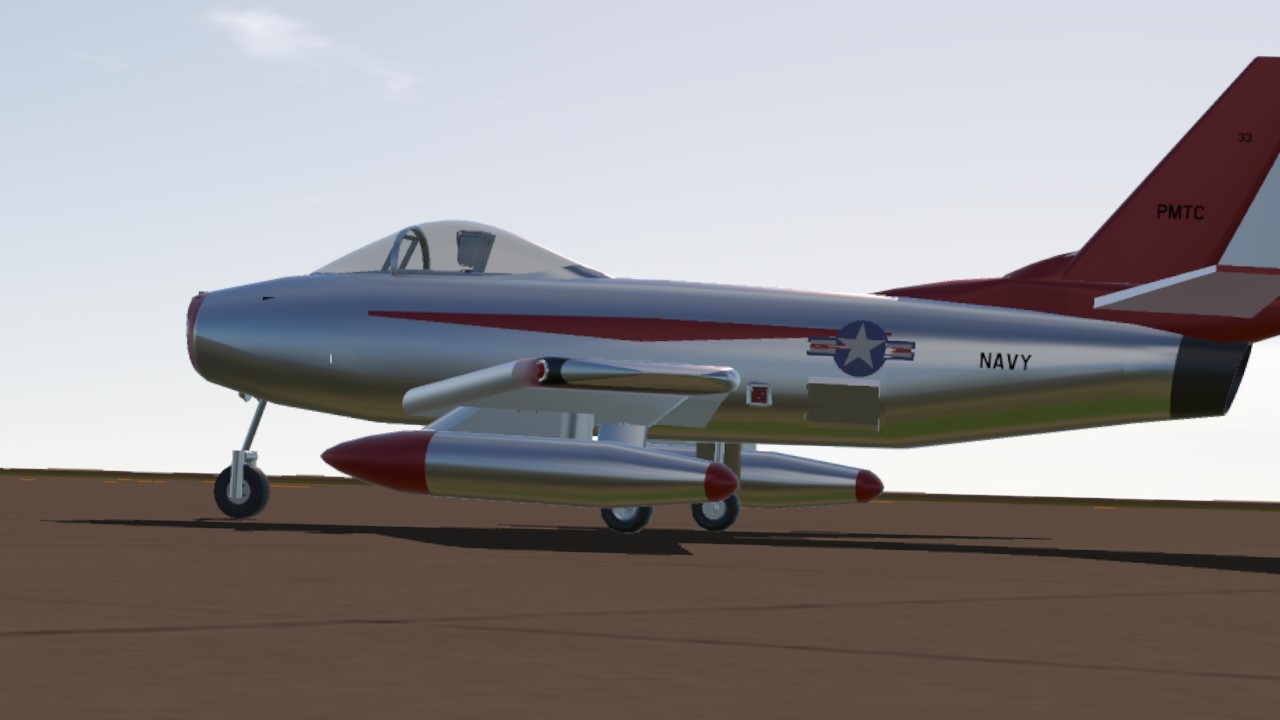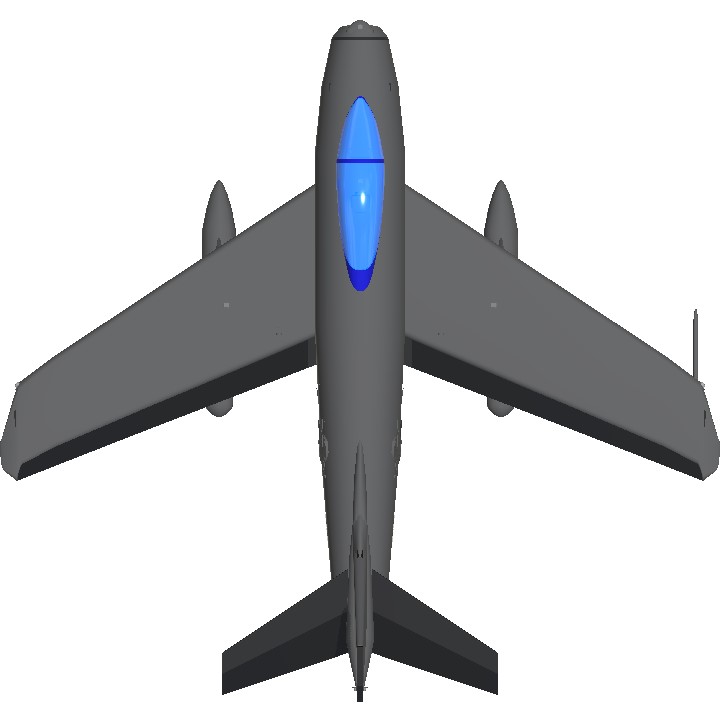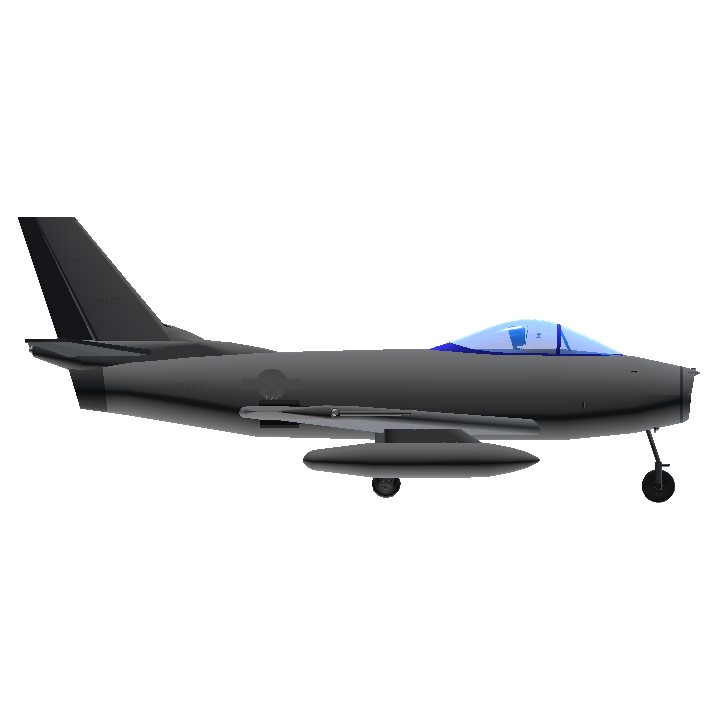Auto Credit Based on Superliner350's F-86F Sabre
uhh
description
the company thought that if the drone conversion could be kept simple, and the drone was never flown without a safety pilot except for actual missile firings, then the probability of losing an aircraft due to system failure would be very low. As a result, the QF-86E conversion could be relatively simple and would thus minimize cost. Minimum disruption of the aircraft systems also ensured that the conversion process was quick and easy to embody.
In March 1974, the purchase option on the McEwen Sabre 5s expired, and in order to renew the option for an additional six months, FSI purchased one aircraft from the New Brunswick firm. The refurbishment of this machine (ex-RCAF 23320, placed on the US civil register as N74170) was completed at Moncton and the Sabre was ferried to Mojave to become the first prototype drone. When the six-month option expired again in September 1974, FSI was required to buy a second Sabre in order to extend its purchase option further. This aircraft (ex-RCAF 23096, US registered as N8686F) had been owned by the Boeing Company, which used it as a chase plane during airliner test flights. It was traded to McEwen’s company for a Sabre 6 replacement, which subsequently served Boeing for nearly two decades. FSI in turn obtained N8686F directly from Boeing, and its registration was changed to N74180. It was ferried from Seattle to Mojave where it would become the second drone prototype.
The development contract for what became the QF-86E called for two ‘proof of concept’ Sabre drones, to be converted, tested and proved to the Army by Flight Systems prior to September 1975 – giving the company just nine months. Demonstration of the QF-86E system was to include complete target presentations conforming to the requirements of the Stinger Program office.
controls
AG1 = lights
Kthxbye
Specifications
Spotlights
- YarisSedan yesterday
General Characteristics
- Predecessor F-86F Sabre
- Created On Android
- Wingspan 42.2ft (12.9m)
- Length 39.9ft (12.2m)
- Height 16.7ft (5.1m)
- Empty Weight N/A
- Loaded Weight 32,353lbs (14,675kg)
Performance
- Power/Weight Ratio 1.041
- Wing Loading 88.6lbs/ft2 (432.5kg/m2)
- Wing Area 365.3ft2 (33.9m2)
- Drag Points 3139
Parts
- Number of Parts 119
- Control Surfaces 7
- Performance Cost 600






download counter is higher than the upvote one wth